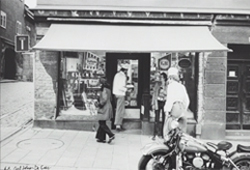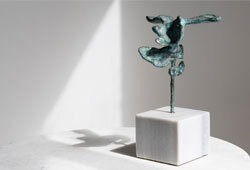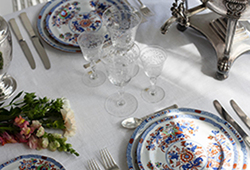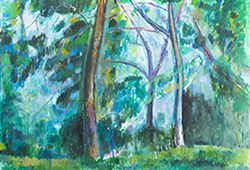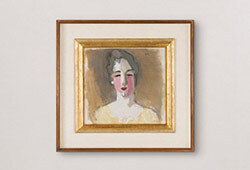Josef Frank
a "Flora" chest of drawers, Firma Svenskt Tenn, Sweden ca. 1940.
Model "1050", mahogany, floral prints from 'Nordens Flora' after C. A. Lindman, three drawers with brass mounts, ball feet. Width 132 cm, depth 43,5 cm, height 76 cm.
Already in Vienna in the early 1930s when working with Oscar Wlach and their company Haus & Garten, Josef Frank began to cover his furniture with different kinds of materials. At the time he made use of different textiles. After he moved to Sweden Frank designed the first cabinet covered with prints in 1938 - the so called 'Flora cabinet'. Since then he designed several versions of covered pieces of furniture with different motifs and materials. Key included.
Slight wear.
Provenance
Reportedly, around 1940, Estrid Ericson received one of her larger interior design commissions, which was the furnishing of a 12-room apartment at Stigbergsgatan at Södermalm, Stockholm. In connection with this commission, the current Flora chest of drawers was placed in the apartment in one of the daughters' rooms. Within the family, it has always been said that it was likely the first of its kind. The chest, along with much of the other furnishings, has since remained in the same family's possession.
Designer
Josef Frank was born in Austria and studied architecture in Vienna. As an architect, he worked with private home areas, villas and apartment buildings. In 1925 he started his own interior design firm Haus und Garten together with two architect colleagues. In connection with the advance of the Nazis, he emigrated to Sweden and was employed in 1934 at Svenskt Tenn. After the outbreak of World War II, Josef Frank, who came from a Jewish family, was forced into exile in New York. At Svenskt Tenn, he made an impact on the product range for four decades; especially when it comes to furniture and fabric prints.
Read more





